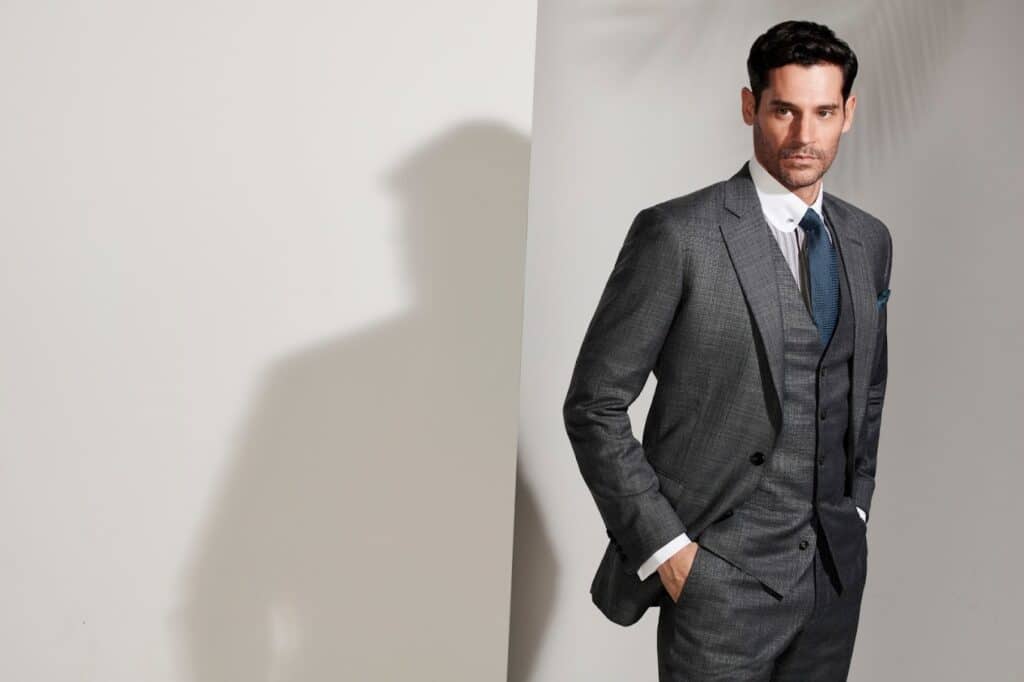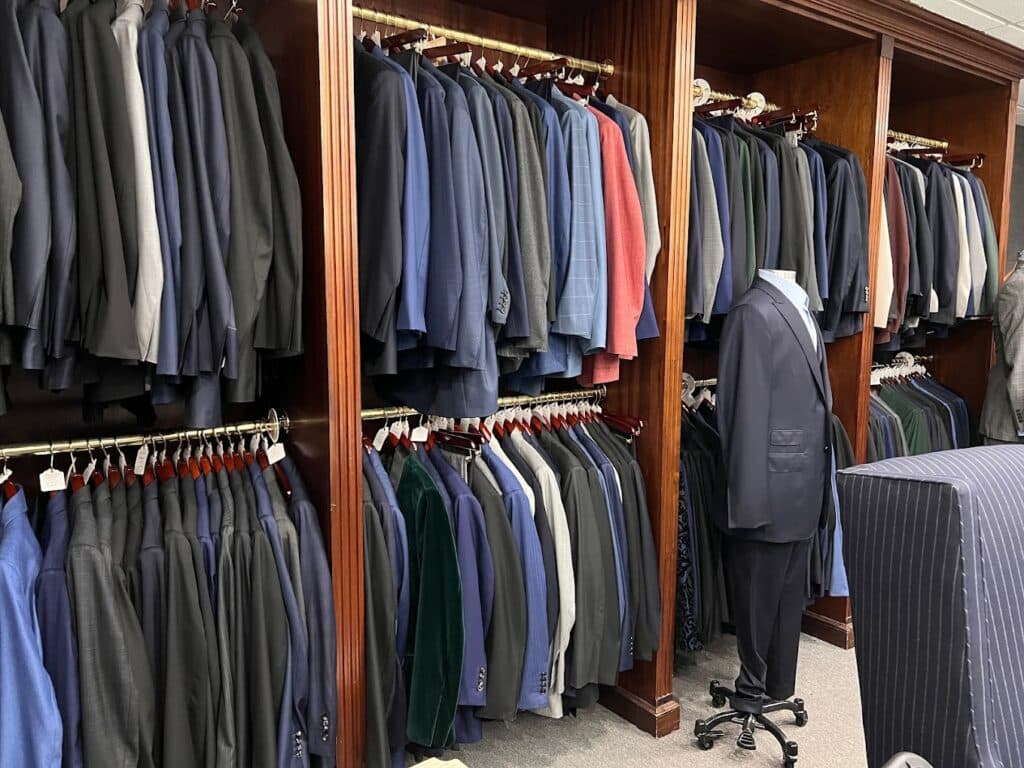Think a suit is just a suit? Not if you want to make an impression. And not if you want a suit that fits you.
But how to choose a suit that is the right fit?
Leave behind the idea that you can properly present yourself with off-the-rack or made-to-measure options. Here is our suit buying guide to pick a bespoke or custom suit.
Tips to buy a suit that fits
1. Be confident with your choice.
If you are undecided on whether to get a bespoke suit, consider that anything you pull off a rack will not take into account the way the human body is actually built.
Notably, 70% of people have one arm that is a quarter-inch longer than the other; your suit should reflect the reality of your body’s dimensions if you want to look your best.

2. Know what you want.
You don’t need to know exactly what you want, of course. Part of the shopping process is about increasing your exposure to different styles, patterns, and ideas.
However, it does help to have a sense of the occasions to which you will want to wear the suit. Is it for job interviews or a wedding? The divergent expectations of formal occasions will benefit from a slightly modified approach.
3. Simplify.
You do not need to get carried away with every characteristic of the suit. If this is your first foray into custom tailoring, go with navy, medium grey, charcoal, or another classic hue.
Going with a standard color will make your suit more adaptable for various occasions – and to wear as independent items whenever that makes sense.
4. Flatter your shape.
You don’t want the suit to restrict your movement. You do want it to flatter your build and be somewhat slim (although see #9 below regarding physique), but do not become so focused on appearance that you forget your range of motion.
Your comfort will translate to confidence, which will ultimately allow you to look better in anything you wear.
5. Consider the fabric in relationship to time of year.
A lightweight worsted wool is something that you could wear in any season. For winter, go for tweed, flannel, or more insulating wool. For summer, try fabrics such as linen, silk, or cotton.

6. Skip the trends.
Skinny lapels and shorter pants are trending right now among those recommending and buying custom suits. If you want your suit to be an investment that you can wear in 5 or 10 or 20 years, skip any style that has not shown itself to have longevity.
You don’t want to feel that your suit is “last year’s news” in your second year of ownership. Go classic.
7. Don’t dry clean too often.
You will quickly deteriorate the fabric of your suit if you get it dry cleaned once a month. Generally, you only want to get it washed following a spill; and try not to get it dry cleaned more than once a season.
How can you make it look fresh when you put it on for an important event without washing? You do probably want to get rid of the wrinkles each time – and that is a service that could be performed by a dry cleaner if you want.
Now, getting rid of those wrinkles will not necessarily be key for every event; some stylists actually recommend intentional wrinkling of the jacket for informal occasions.
8. Get a great hanger.
If your suit does not come with a strong hanger that is supportive of the jacket’s shoulders, it is certainly worth the small cost to get a high-quality one that will keep it looking its best.
9. Consider your break.
There are no definite rules for your suit – and your perspective should influence the appearance of the pants similarly to the jacket.

The time-honored approach is that the beginning of the sole of your shoe should touch the rear hem of your pants – called a full break. If you go that route, you should expect a bit of “bunching.”
A more contemporary way to go is a small break, or none. Some fashion advisors suggest that you will look better in silhouette when you forego the full break (but again, be aware that it’s unconventional).
10. Be aware of how your body type influences the aesthetic.
Despite #3 above, people who are tall and thin may find that a suit that is excessively trim makes them look a bit gaunt. If your body build does not give your appearance much bulk, it can help for a suit’s fabric to have additional flow.
If you are short, you could try trim pants without much break – which will make you look slightly taller. Cropped suits and padded shoulders can be problematic for those whose muscles are larger.
11. Give yourself some padding (maybe).
As just noted (#10), be wary of shoulder pads if you are muscular. Nonetheless, pads can be great in a business setting because they increase your stature.
You will get better movement and comfort without those pads, though – so it’s generally a good idea to skip them or soften them for a summer purchase.
12. Work with the best.
Do you want one of the finest custom-made or bespoke suits in New York? At Alan David Custom, with four generations of custom clothing, we will always embrace our heritage of quality over price. See how we stand out with our custom suit options.
About the Author: Alan Horowitz
Alan Horowitz is the owner of Alan David Custom. Having grown up in the custom tailoring business, Alan values taking care of his clients and always going above and beyond to ensure 100% satisfaction. Alan David Custom has become the best custom tailor in New York City. Alan is a 4th generation tailor with an expertise in measuring and pattern making.


